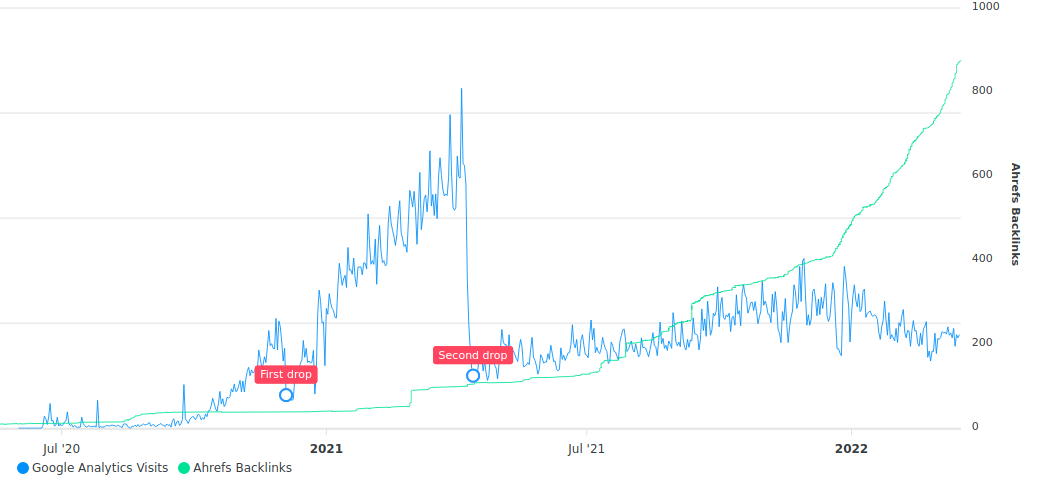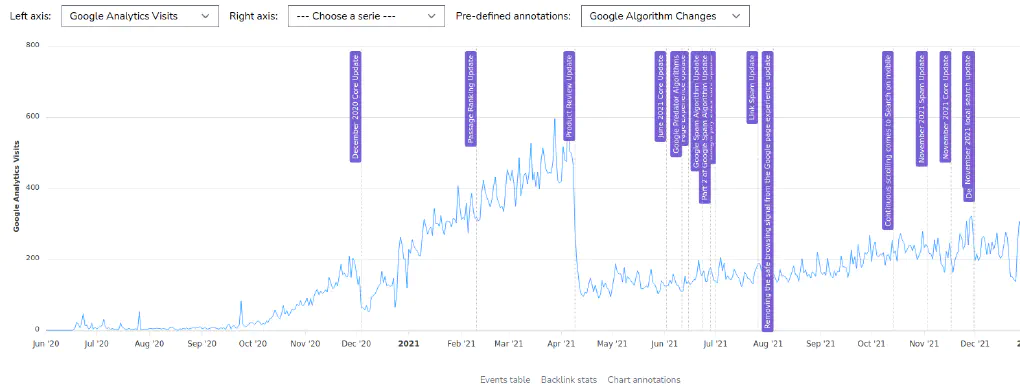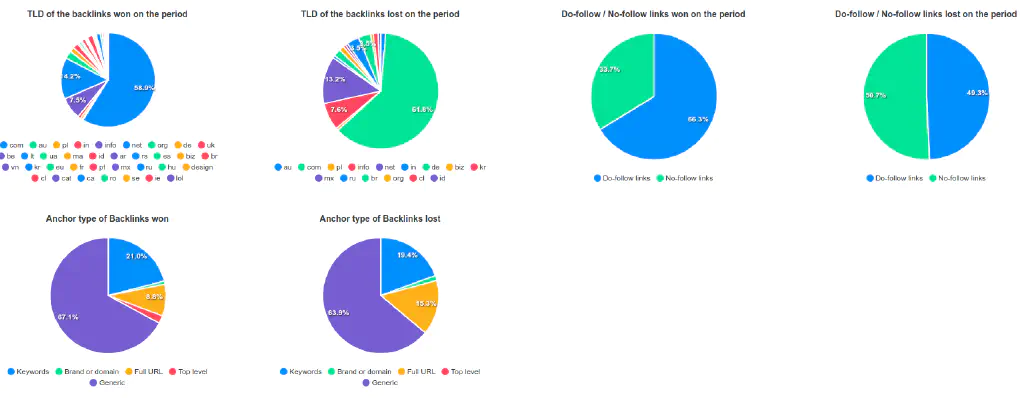Buying websites is a lot of work. The best method to optimize your time consists in discarding quickly the businesses you are reviewing. Instead of asking yourself why you should buy a listed website, ask yourself why you should not invest any money.
One of the first checks to perform is to know if a Google update impacted the site in the past. If this is the case, you need to assess what the owner did to circumvent the update and whether it worked.
With Website Due Diligence, this is pretty easy.
Mapping Google Analytics data to Google Search updates
Obviously you need to connect to the Google Analytics console of the listed website to export the data since the start of the data collection, and then import it in Website Due Diligence.
Once it’s done, you can display the visits and the Google updates on the same chart.
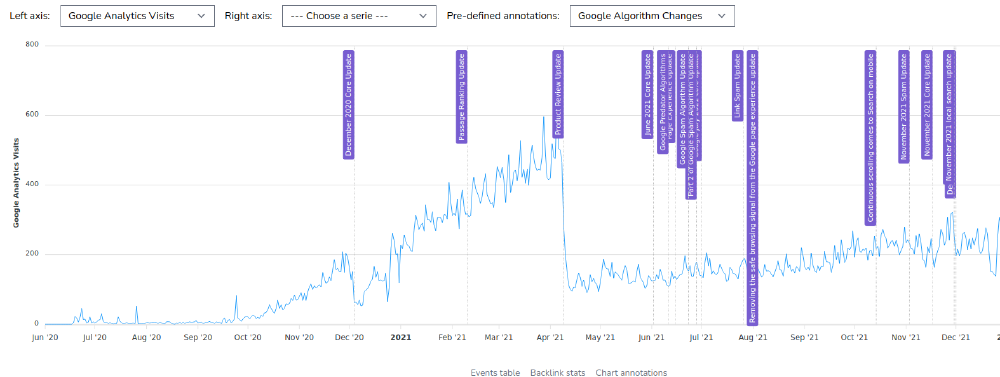
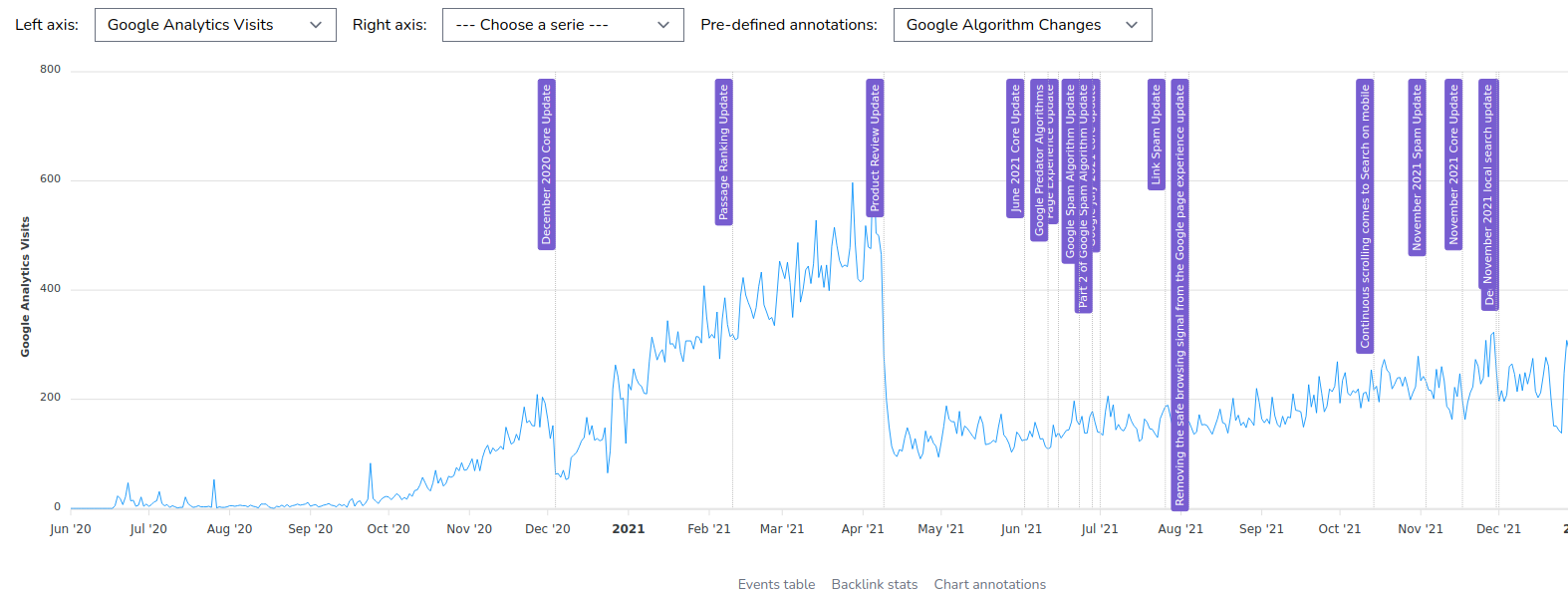
You will immediately see the big drop in April 21, where the traffic has been divided by 3 suddenly. But there was also a first drop in December 2020.
On WDD (shortname for our application), you can annotate the various data of the charts. It’s useful for a later review, to know what are the points of interest on the data provided by the seller.
So let’s add a label on the two drops.
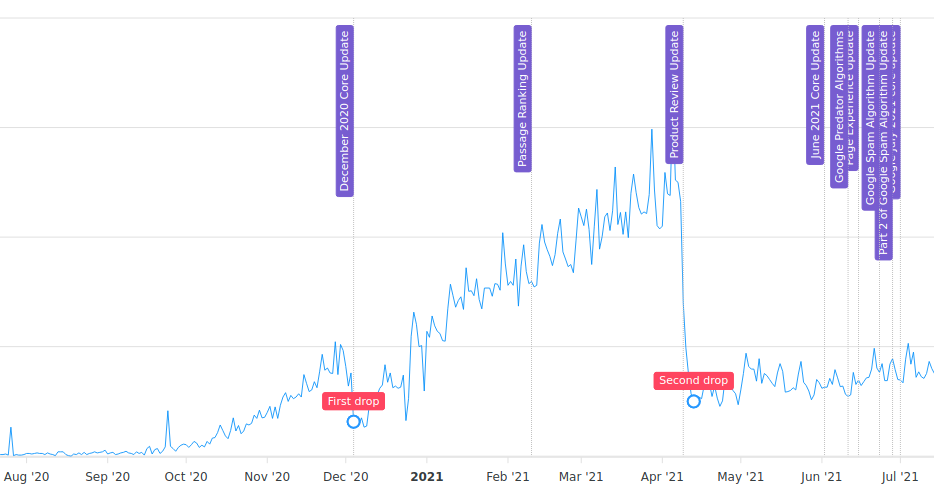
Let’s deep dive
At this stage, we already have a negative opinion on this website. Being impacted once by a Google Update can be ok, but twice? Also, notice how the owner has not been able to recover.
The Google search updates
The first update that may have impacted the website is the famous “December 2020 Core Update”. This update is still not well known, so reading articles about it will not help you to identify the root cause of the traffic drop. Following this update, the main advice from SEO experts around there was: “improve the quality of your content”. Not very helpful.
The second update: “Product Review Update”, might be more interesting. According to Alan Kent (Google developer Advocate), this update aimed at rewarding high-quality product reviews.
Mainly relevant to sites that post articles reviewing products. Think of sites like "best TVs under $200".com. Goal is to improve the quality and usefulness of reviews we show users.
— Alan Kent (@akent99) December 1, 2021
And guess… The analyzed website is a review website! Most of the posts review various products in the Technology niche.
Is it related to the amount of content?
To better understand the history of this website, we imported the Sitemap into WDD. In two clicks, we see the frequency of posts that have been published or modified on the website.
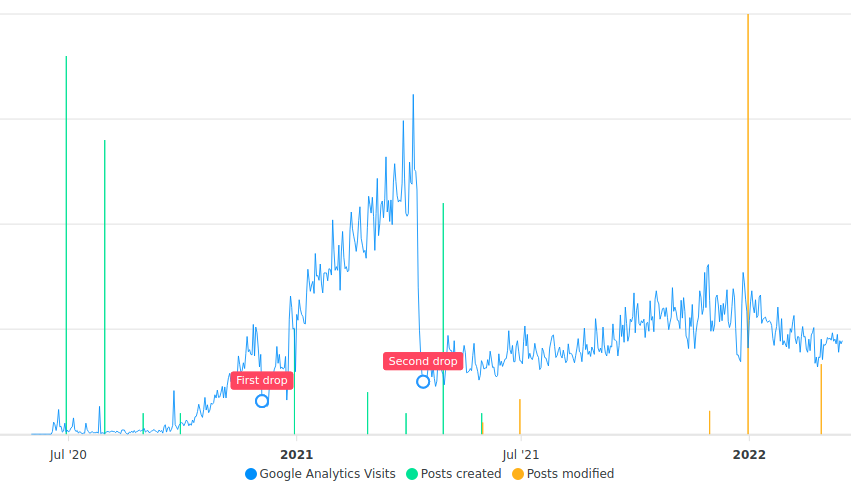
The posts created are represented by a vertical green bar, while the post updates are orange. Do you notice something? The post creation effort has been made when the site has been launched, which is normal, but also after the big traffic drop, probably as an attempt to recover from the Google Update.
If we zoom while disabling the Google visits, we have a clear view of the frequency of posts.
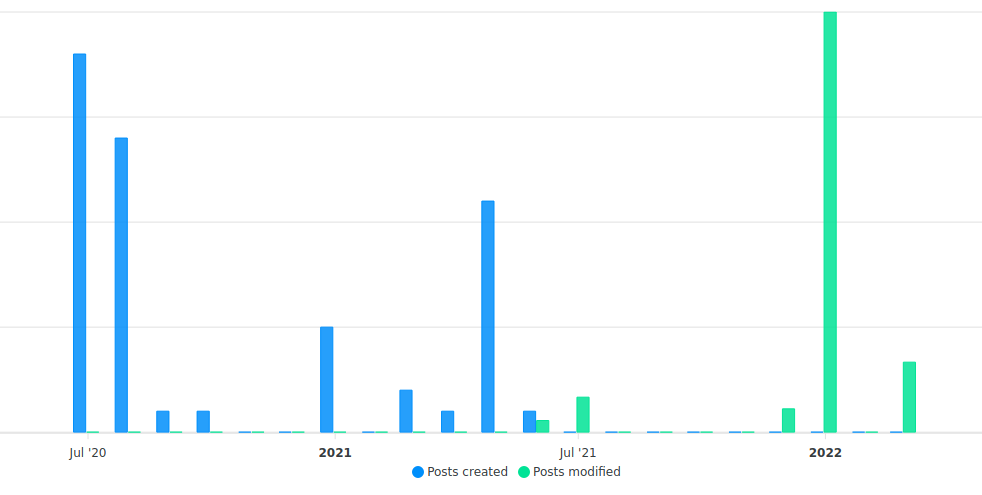
The scenario starts to be clear: the website started well; it is impacted once by a Google update, then a second time. And then, the owner decided to create new posts to recover, but also to update some old posts.
Also, note the big number of post updates in December 2021, probably when the owner took the decision to sell his website. In one month, the owner modified 36 posts. This is a big number, and this needs to be checked too.
The December 2021 post updates
To check what has been modified on the posts, we will use the Archive.org Wayback Machine, which is integrated to Website Due Diligence.
First, we go in “Historical Analysis”, and we filter the events to get only Posts Sitemap. Then we sort by date, to get some modifications that happened in December 2021.
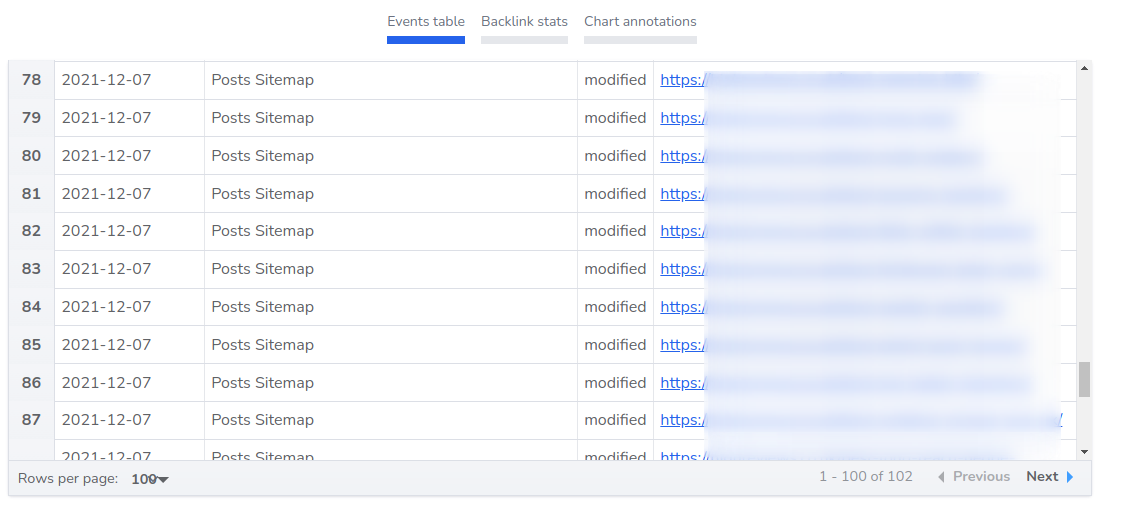
Then, we click on the tab “Wayback machine” and we are searching for the posts identified in the step above.
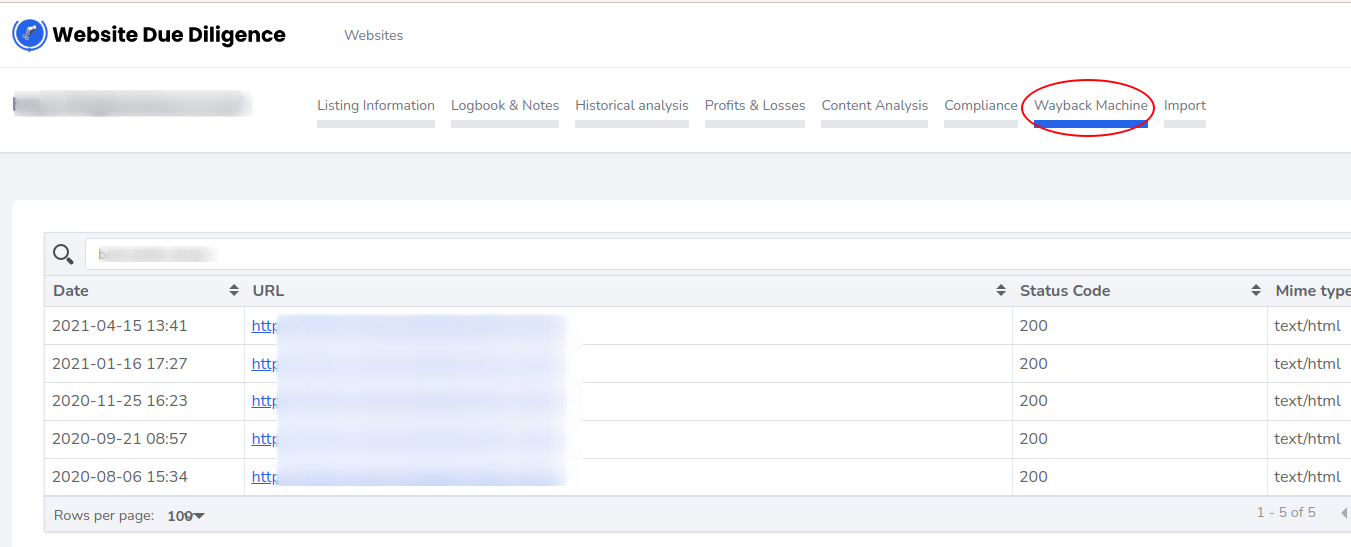
A click on the link at the appropriate date (eg before the modification) allows you to compare the old version with the current one. Here, we noticed something strange: we checked 3 or 4 articles, and the text has not been changed between the two versions. What does it mean? Our best hypothesis at this stage was that the owner modified the published date of these posts, in a desesperate attempt to trick Google :-) This is rather funny, but it is another red flag.
What about revenues?
The second Google update impacted the traffic, but also the revenues:
| Month | Revenue ($) |
|---|---|
| March-21 | 1584 |
| April-21 | 963 |
| May-21 | 476 |
As you can see, the revenues have been divided by 3 with this update, which is more or less the same factor as the traffic drop. So, everything is coherent for now.
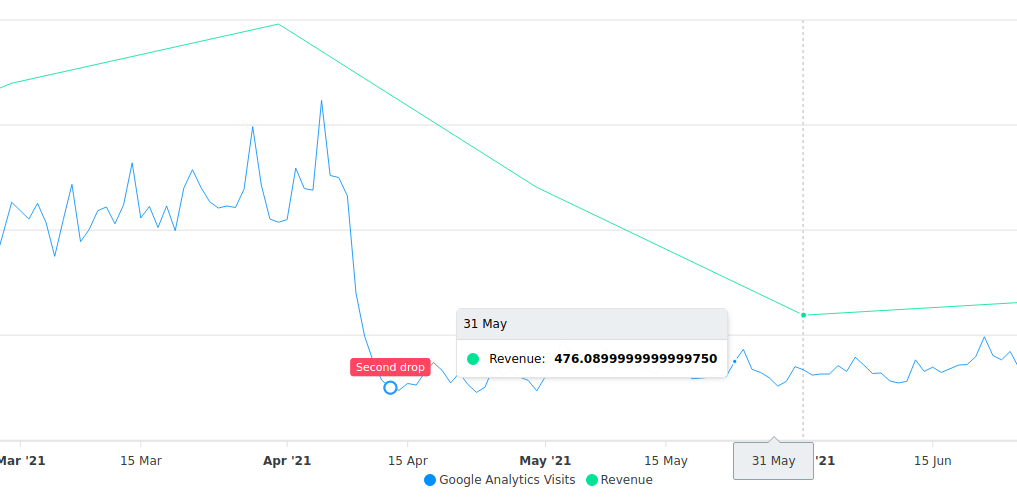
Why we can discard this website without further analysis
At this stage, the analysis took only a few minutes, and the decision not to buy it has been already taken. Indeed, the Google Update almost killed the website, and without any real recovery in almost one year.
Our rationale is as follows:
- It is a pure review website, without any mixed content. All articles are review ones.
- The domain name - which contains the word “review” - does not allow the owner to expand the niche easily outside product reviews
- The Google Update impact has been huge, and it’s not sure that it will not be impacted again in the near future.
- The posts have not been really updated.
If we had to manage this website, we would start by writing more generic blog posts, not review ones. Currently, a website with only product reviews containing affiliate links looks too spammy.
Also, the backlink profile - despite it has not been analyzed - seems at the first sight a bit suscipicous, with a huge increase lately. This should be analyzed further when no red flag has been identified prior to this step.
